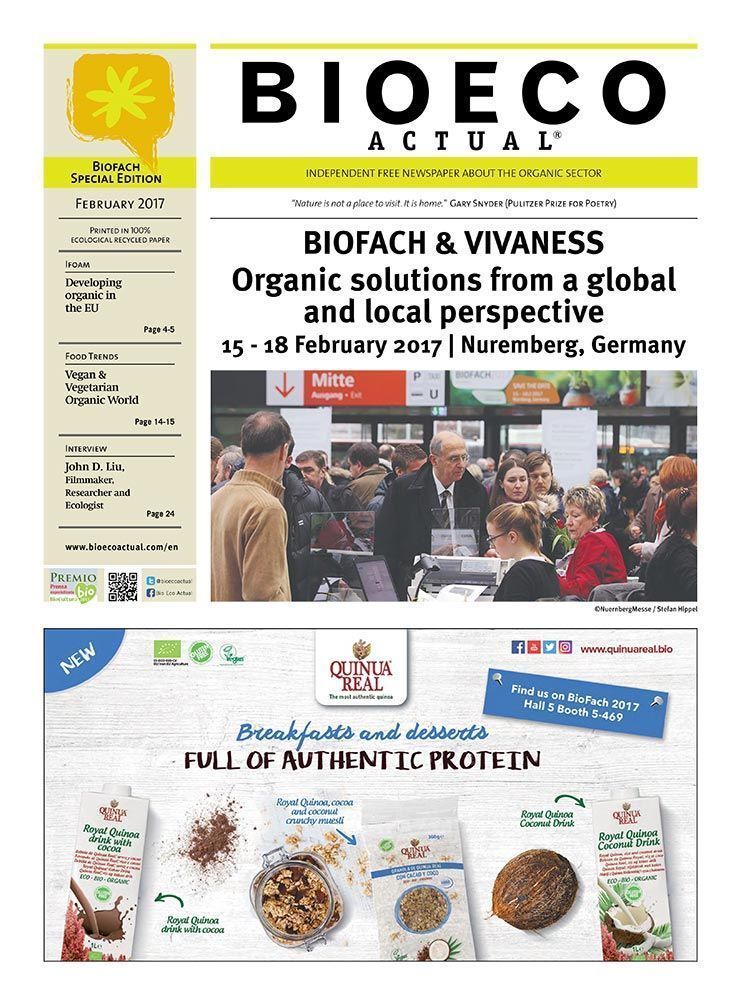Five years ago, BIOFACH discussed Organic 3.0. Are we now implementing it and are we on track? Yes, but…

India 2017: the global Organic General Assembly of the organic movement approved the strategic framework of Organic 3.0. The overall idea was to reposition organic in the world, to highlight strategic priorities and to start scaling organic into mainstream. Are we now really doing that? Has there been any progress or was Organic 3.0 just a huge discussion without any impact?
This article concludes that some parts of Organic 3.0 really brought change, but that other parts lag far behind expectations. Particularly in aspects where homework needed to be done, for instance in implementation of the strategic features, we can observe a lack of conceptional leadership.
Positioning Organic
IFOAM Organics International changed its mission from “leading, uniting and assisting the Organic Movement” into “leading change, organically”, highlighting that the organic work does not just serve those that label products organic, but that it wants an overall change in the agriculture paradigm. Doing well in producing an added value for consumers and creating more income for the entire value chain is not enough. It is no longer about a competitive advantage, for example with better animal welfare standards or improved social benefits for farmers and their children. It is about overcoming industrialization in agriculture. In other words, not only organic people, but everything including competitors needs to become truly sustainable.
To start with a positive conclusion: Repositioning based on Organic 3.0 has worked. In fact, likeminded movements (e.g. agroecology, fair trade, community-based agriculture etc.), policy makers and people in general increasingly heard it, reacted positively and the picture of Organic is changing.
The Organic 3.0 message of organic as a mainstream solution has reached policy makers at least at the global level
Organics for SDG and Policy
The Sustainable Development Goals (SDG) are the main and the only internationally accepted holistic development framework. The 2030 Agenda for Sustainable Development is mainstream and the organic movement shares the objectives. Interestingly, the debates about the SDG (e.g. the SDG Summit 2019 in New York of the head of states of the 193 signatory countries) see organic as part of the solution. We now hear very often that methods that are well embedded in organic standards, manuals and best practice guidelines (e.g. soil fertility management and ecological intensification) should be the standard. There is also consensus that industrialized agriculture is an important cause for many threatening issues such as poverty or environmental destruction.
Sadly, recent developments make those issues we were scared of, such as climate change and loss of biodiversity, more dramatic. The Friday-for-future movement and green parties gain ground, which indicates growing public awareness about issues where organic is well-positioned. Solutions like farming organically are highly wanted.
To conclude: Yes, the organic 3.0 message of organic as a mainstream solution has reached policy makers at least at the global level. This despite the fact – against the views of numerous scientists – that many don’t trust that organic can produce a sufficient quantity of food for a growing and more demanding global population. On top of that, policies have not yet sufficiently trickled down to national and local levels.

Market Realities
Organic 3.0 has the ambition to exceed the 1% (food market share) niche. While objectives cautiously were not quantified in the official document, expectations back then were much higher than reality nowadays. Countries like Denmark demonstrate that surpassing the 10% market share is possible. Other countries like France demonstrate double-digit growth. Overall, there is a very constant upwards trend and markets continue to grow at least in the economically well-developed areas in Europe and North America. However, in many countries, organic hasn’t developed much. There, organic products are found only occasionally and organic is far from being mainstreamed. In other words, organic revolutions haven’t happened and are not on the horizon, which may be good to maintain integrity and the possibility to have organic institutions and attitudes grow organically.
Policies have not yet sufficiently trickled down to national and local levels
Organic 3.0 features in scrutiny
The four Organic 3.0 features: “culture of innovation”, “continuous improvement towards best practice”, “diversity of ways to ensure transparent integrity” and “holistic empowerment from farm to fork” have not advanced much. There is a lack of real good answers about how to deal with novel technology (e.g. artificial meat, digitalization, new GM technology) and the innovation committees failed to do an effective job. Inside the sector, heavy competition and over orientation on minimum standards is still the rule rather than the exception. And there are no solution mechanisms for the problem that the farmers get very little of the price premium particularly in value chains in developing countries (e.g. coffee). True Cost Accounting (TCA) unfortunately stagnates. The concepts are very complex and hard to understand. We didn’t manage to create a simplification and an understanding that one can’t just introduce TCA, but only push towards it in the political debates and decisions.
To conclude: The organic leadership – including the democratically legitimized representatives and advocates, the think tanks, the business and service provider fora, the scientists etc. – is challenged to make progress in the identified key issues and to build structures that are able to cope with the challenges.
Author: Markus Arbenz, Consultant for organic development.
Subscribe at our Newsletter and be up to date with the latest news in the European Organic Sector
Bio Eco Actual, International Organic Newspaper
Read Bio Eco Actual










































